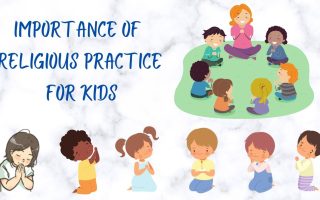Disciplining a child can be a challenging yet crucial aspect of parenting, especially when you have an energetic 4-year-old like my son, Hitarth. I won’t pretend that Hitarth is always perfectly behaved. After all, expecting impeccable behavior from a 4-year-old at all times is unrealistic. At home, he is usually on his best behavior, but when he’s with other kids, even I sometimes struggle to discipline him. But I’m trying my best and constantly seeking ways to improve. Here, I’d like to share some creative discipline methods that I’ve been trying, which focus on teaching them right from wrong while making the process engaging and fun. ✨And trust me, they might just make you rethink the whole “discipline” thing!
I’m not bragging here but I am often asked how Hitarth listens to me so calmly—without tantrums, yelling, or force. Is there a secret? Am I always calm and composed? Let me tell you honestly—there’s no magic wand. But there is a conscious effort I’ve made since the beginning to raise him with understanding, boundaries, and unconditional love. And trust me, discipline doesn’t need shouting or hitting. It can be built through small, daily moments.
Here’s how I do it.
Why Creative discipline methods?
Creative discipline methods prioritize a positive, engaging, and tailored approach to guiding children’s behavior. By transforming potentially challenging moments into constructive learning experiences, these methods ensure discipline is both effective and enjoyable. These techniques are not only about setting boundaries but also about empowering children, promoting understanding, and fostering essential life skills. Dive into the various strategies below to discover how to seamlessly integrate these methods into your parenting style.
Involving Him in Chores: Raising a Responsible Little Helper
From a young age, I’ve encouraged Hitarth to help around the house—not as a punishment, but as a way to teach responsibility and ownership.
🧹 He sweeps the floor sometimes.
🧽 Wipes the table.
🧺 Picks up his toys.
🍽 Even helps with setting the dinner table!
One day, I asked him to just clean up the sofa where his toys were scattered. When I came back, he had not only cleaned the sofa and table but also swept and mopped the floor! ❤️
📣 Loved what you read? Want to go deeper into conscious parenting? ✨ The Power of Manifestation in Parenting is now available — A soulful guide packed with real-life tools like affirmations, energy shifts, and sleep talk that I personally use with my son, Hitarth. 💛 Start your journey toward calmer, connected parenting today. 🎉 Launch Offer: Only ₹99 (limited-time price!) 📲 Instant download. No waiting. 👉 Grab your copy now!.
What makes a difference with these creative discipline methods?
I appreciate him in front of others.
Whenever guests come over, I proudly say, “Hitarth helps me with housework. He’s such a responsible boy.”
Hearing those words lights up his face—and he ends up helping me more, out of joy, not pressure.
💡 Kids repeat what gets attention. Give positive attention to good behavior, and you’ll see it bloom.
Check here: A List of Age-Appropriate Chores for Kids 2 to 18
Teaching Apologies: Saying Sorry with Meaning
Hitarth knows that making mistakes is okay—but owning up is important.
If he hurts someone or does something wrong, he has been taught to say sorry immediately—not forcefully, but with understanding.
And no, I don’t punish him by yelling or hitting.
Instead, I take him away from the situation, let him calm down, and then gently talk to him about it.
I help him understand why something was wrong and what he can do differently next time.
Discipline isn’t about fear.
It’s about building a conscience in your child through creative discipline methods.
💡 Also Read
How I Reduced My Son’s Screen Time from 1 Hour to 10 Minutes in Just One Day!
The “Two Choices” Approach – Giving Choices, Not Orders
I’ve learned that kids don’t like being controlled—but they love feeling in control.
So instead of giving direct instructions, I offer Hitarth two respectful options that both work for me.
For example:
🪥 “You can brush your teeth now and enjoy your bedtime story, or brush later and skip the story. You choose.”
Now, it’s like magic. He feels like he’s in control and gets to make a choice. But here’s the kicker – both choices lead to the same result, which is brushing his teeth. So, it’s a win-win for us as parents.
This approach is a game-changer because it helps Hitarth think about consequences. He knows that his choice determines what happens next. It’s like a sneak peek into the grown-up world of making decisions and understanding outcomes.
We keep the choices reasonable, of course, and tailored to his age. But it’s all about giving him a sense of power and making the whole process less of a battle and more of a collaboration.
So, the “Two Choices” Approach? It’s like the Jedi mind trick of parenting (employing a gentle yet influential method to guide their child’s behavior and choices, often with positive and cooperative results), and it works like a charm! No shouting. No drama. Just natural consequences—and a child who feels heard.
Kindness Is Celebrated, Not Just Expected
From the very beginning, Hitarth has been a kind, polite, and loving child. Whether it’s sharing toys, helping someone in need, or simply using gentle words—his heart shines through. And I make sure he knows that kindness is a superpower.
To encourage this even more, we created a fun Privilege Points Chart.
✨ Each act of kindness, helpfulness, or responsibility—like helping in the kitchen, saying sorry, or comforting someone—earns him stars or happy faces.
And these points aren’t just for show!
🌟 10 points = extra playtime, a new coloring book, or even the joy of choosing dinner.
This simple system teaches delayed gratification, responsibility, and that doing good always comes back in beautiful ways.
And there’s more to it. We also do this manifestation and positive affirmation stuff with him. We talk about how being kind and helpful is like planting seeds of goodness in the world. And when he does these good deeds, it’s like those seeds growing into something beautiful.
So, it’s not just about being kind for the sake of it; it’s about knowing that his actions matter and that he can manifest positive change in the world. It’s all part of the bigger picture of creative discipline methods.
In the end, we’re all about raising a compassionate and kind-hearted kiddo, and this whole kindness and manifestation thing? It’s like our secret parenting superpower!
When Upset, We Don’t Fight—We Hug and Call Hanuman Ji
Whenever Hitarth is sad, frustrated, or upset, we don’t say, “Let’s reset” like a switch.
We simply hug. Tight and warm.
And then I softly say,
🕉️ “Hanuman ji hain na… sab theek kar denge.”
He smiles, nods, and calms down.
It’s become our silent language of reassurance.
Faith and love create emotional safety—and that’s a child’s true reset button.
Now Let’s Be Real: Discipline Isn’t Always Picture-Perfect
Let me be honest—it’s not like Hitarth is always perfectly disciplined. He’s a child after all! There are days of resistance, tantrums, and testing boundaries.
But instead of yelling or hitting (which I’ve never believed in), I’ve kept something more powerful in place—“ankhon ka darr.”
Yes, that silent look—that firm, calm gaze—does the job 90% of the time. It’s a quiet reminder that Mumma means what she says.
I’ve also learned the power of setting expectations in advance.
So before we go anywhere—whether to a wedding, a mall, or a friend’s house—I gently explain things like:
🗣 “We’ll greet everyone politely.”
🗣 “No running around in the hall.”
🗣 “If you want something, ask respectfully.”
This pre-framing helps him stay mindful of his behavior and makes our outings peaceful and joyful.
Discipline isn’t about catching children after mistakes. It’s about preparing them beforehand with love, clarity, and trust.
In the End, It’s About Connection, Not Control
Discipline, for me, isn’t about rules—it’s about raising a child who understands why something is right or wrong. It’s about building a bond so strong that even a look from my eyes is enough to make him reflect.
Of course, Hitarth isn’t perfect—no child is, and neither am I. But with love, consistency, faith, and little playful methods, we’re growing together—every single day.
Before stepping out, I give him clear instructions. I don’t yell. I don’t hit. I trust him. And most importantly, I talk to him. And when things go off-track, we don’t reset with lectures—we hug, take Hanumanji’s name, and try again.
That’s our parenting journey—not perfect, but deeply intentional, and full of love.
And if you ask me—“Is parenting hard?”
My answer is simple—“Not for me.”
Your comments and shares do more than just support our blog—they uplift the amazing moms who share their stories here. Please scroll down to the end of the page to leave your thoughts, and use the buttons just below this line to share. Your support makes a big difference!



